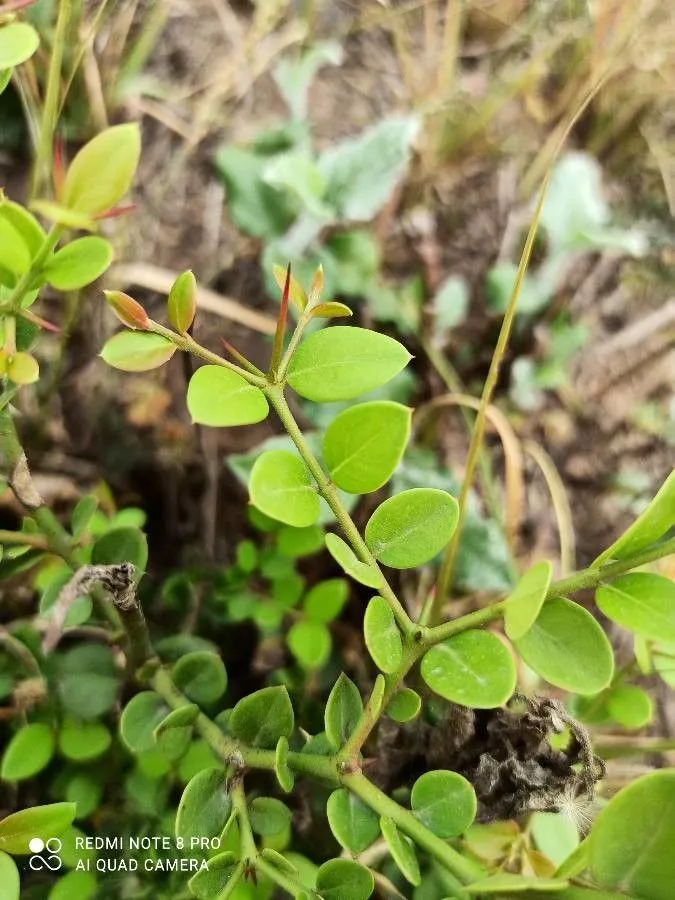
Author: L.
Bibliography: Mant. Pl. 2: 559 (1771)
Year: 1771
Status: accepted
Rank: species
Genus: Carissa
Vegetable: False
Observations: Africa to Indo-China, Australia to New Caledonia
Egyptian carissa, known scientifically as Carissa spinarum, is a notable plant species that belongs to the Apocynaceae family. First described in the work of L. in “Mant. Pl. 2: 559” in 1771, this intriguing plant has since garnered attention for its diverse range and distinct characteristics.
Native to a vast geographical expanse, the Egyptian carissa spans the continents of Africa and Asia, stretching from Africa to Indo-China, and extending its presence to Australia and New Caledonia. This widespread distribution is a testament to the plant’s adaptability to various environmental conditions and climates.
Typically, Carissa spinarum is characterized by its thorny, densely branched structure, which often makes it a formidable shrub in its natural habitat. The plant produces small, star-shaped flowers that are generally white, adding a delicate aesthetic to its otherwise robust appearance. As the flowers mature, they give way to fruit that can range in color from red to purplish-black upon ripening, often drawing the interest of local wildlife and contributing to seed dispersal.
The Egyptian carissa is not only valued for its ornamental appeal but also for its utility in traditional medicine and local horticulture. Various parts of the plant are utilized in different cultures for their presumed medicinal properties, particularly in regions where the plant is native. The fruits, in some areas, are also consumed and are said to have a tart, tangy flavor when ripe.
Ecologically, this species plays a vital role in its native habitats, providing shelter and food for numerous animal species. Its dense foliage and spines offer protection for smaller creatures, while the flowers and fruits provide nourishment.
Overall, the Egyptian carissa, Carissa spinarum, stands out as a resilient and versatile plant with significant cultural, ecological, and ornamental value. Its extensive range across multiple continents underscores its adaptability and importance in the natural world.
Eng: egyptian carissa, carandas-plum, currentbush, kunkerberry, num-num, bush plum, conkerberry, currant bush, wild karanda
Deu: karanda-pflaume
Por: carissa
Spa: ciruela de natal
San: avighna, karamarda
Ita: carissa
Fra: carisse
Tam: kalachedi, kalakkay
Ben: karamacha
Guj: karmarda
Hin: karunda
En: Egyptian carissa, Carandas-plum, Currentbush, Kunkerberry, Num-num, Bush Plum, Conkerberry, Currant Bush, Wild karanda, Arabian num num, Simple-spined num-num, Spiny-leaved monkey-orange
Bn: Karamacha
Zh: Jia hu ci, Tian jia hu ci
Fr: Carisse, Bois amer, Calac, Bois de ronde
De: Karanda-Pflaume
Gu: Karmarda
Hi: Karunda
It: Carissa
Pt: Carissa
Sa: Avighna, Karamarda
Es: Ciruela de Natal
Ta: Kalachedi, Kalakkay
© copyright of the Board of Trustees of the Royal Botanic Gardens, Kew.
© copyright of the Board of Trustees of the Royal Botanic Gardens, Kew.
© copyright of the Board of Trustees of the Royal Botanic Gardens, Kew.
Taken Feb 6, 2022 by Vågen (cc-by-sa)
Taken Nov 1, 2009 by riviere (cc-by-sa)
Taken Apr 25, 2020 by susan brown (cc-by-sa)
Taken Sep 6, 2020 by susan brown (cc-by-sa)
Taken Nov 1, 2009 by riviere (cc-by-sa)
Taken Nov 1, 2009 by riviere (cc-by-sa)
Taken Nov 9, 2022 by Guibien Cleophas Zerbo (cc-by-sa)
Taken Nov 9, 2022 by Guibien Cleophas Zerbo (cc-by-sa)
Taken Nov 9, 2022 by Guibien Cleophas Zerbo (cc-by-sa)
Taken Dec 19, 2021 by susan brown (cc-by-sa)
Taken Jun 21, 2022 by Naushad BM (cc-by-sa)
Taken Apr 6, 2019 by Tela Botanica − François Morand (cc-by-sa)
Taken Jan 8, 2022 by Will Clark (cc-by-sa)
Taken Apr 6, 2021 by YOGESH TOMAR (cc-by-sa)
Taken Mar 24, 2011 by susan brown (cc-by-sa)
Taken Feb 2, 2021 by susan brown (cc-by-sa)
Taken Feb 2, 2021 by susan brown (cc-by-sa)
Taken Jan 22, 2020 by Sudhanshu Kumar (cc-by-sa)
Taken Feb 21, 2021 by Sudhanshu Kumar (cc-by-sa)
Taken Dec 3, 2020 by Lawrence ole Ngugi (cc-by-sa)
Taken Feb 21, 2021 by Sudhanshu Kumar (cc-by-sa)
Taken Nov 1, 2009 by riviere (cc-by-sa)
Taken Nov 1, 2009 by riviere (cc-by-sa)
Taken Oct 14, 2021 by Musa Umar (cc-by-sa)
Taken Nov 27, 2020 by Sophie Macfarlane (cc-by-sa)
Taken Feb 18, 2022 by Abhishek Rajput (cc-by-sa)
Taken Dec 28, 2019 by Hédi BACHA (cc-by-sa)
Taken Jun 24, 2021 by Dennis Milanya (cc-by-sa)
Taken Nov 9, 2022 by Guibien Cleophas Zerbo (cc-by-sa)
Family: Myrtaceae Author: (F.Muell.) K.D.Hill & L.A.S.Johnson Bibliography: Telopea 6: 402 (1995) Year: 1995 Status:…
Family: Rubiaceae Author: Pierre ex A.Froehner Bibliography: Notizbl. Bot. Gart. Berlin-Dahlem 1: 237 (1897) Year:…
Family: Sapindaceae Author: Koidz. Bibliography: J. Coll. Sci. Imp. Univ. Tokyo 32(1): 38 (1911) Year:…
Family: Asteraceae Author: A.Gray Bibliography: Pacif. Railr. Rep.: 107 (1857) Year: 1857 Status: accepted Rank:…
Family: Fabaceae Author: Medik. Bibliography: Vorles. Churpfälz. Phys.-Ökon. Ges. 2: 398 (1787) Year: 1787 Status:…
Family: Aspleniaceae Author: (Cav.) Alston Bibliography: Bull. Misc. Inform. Kew 1932: 309 (1932) Year: 1932…